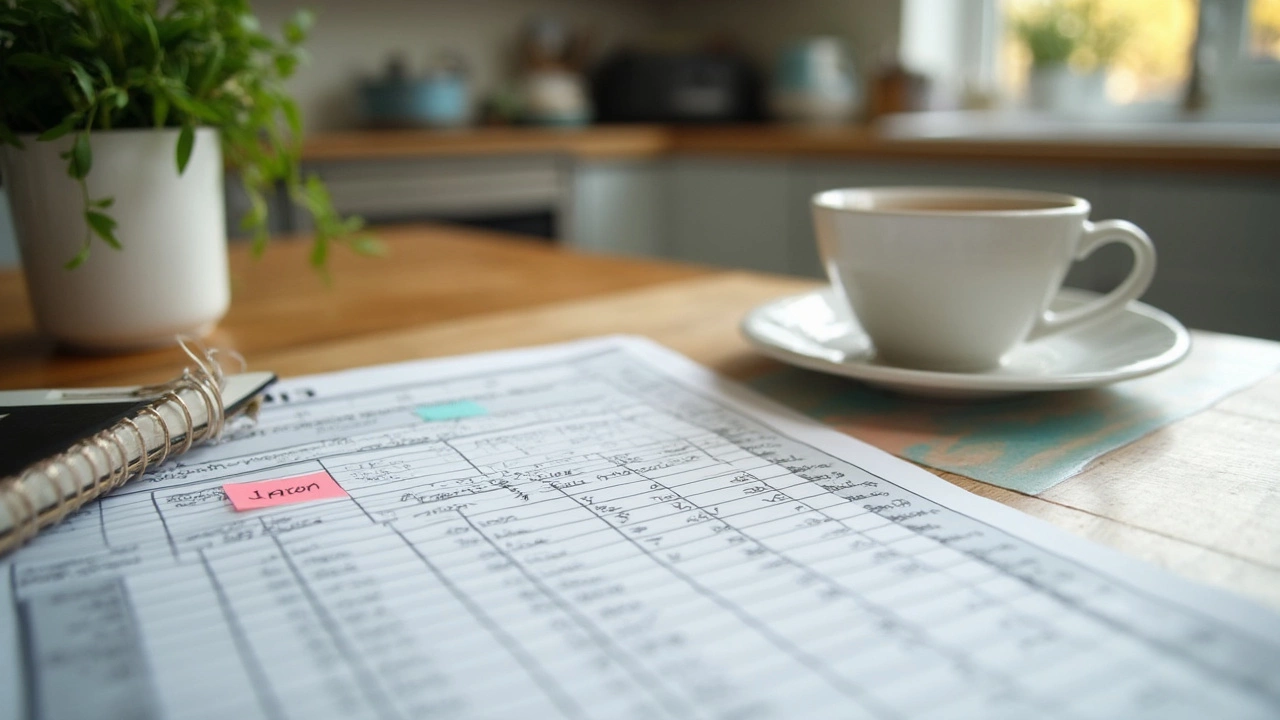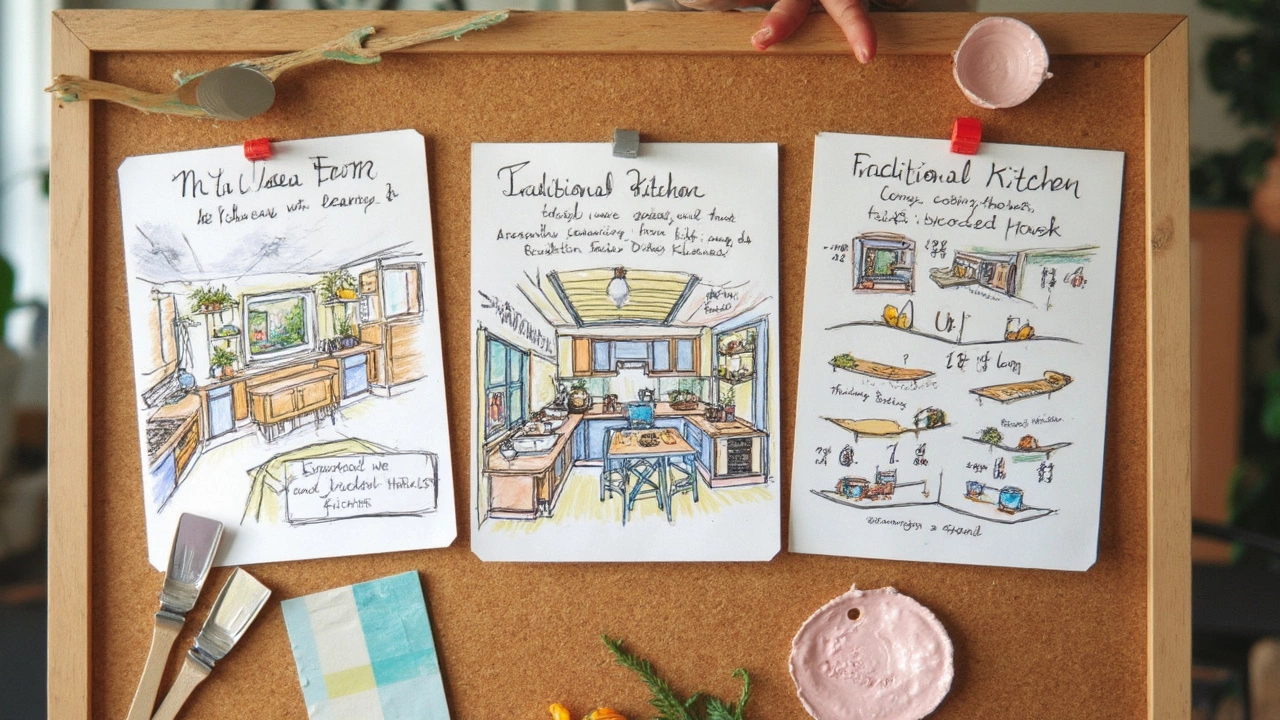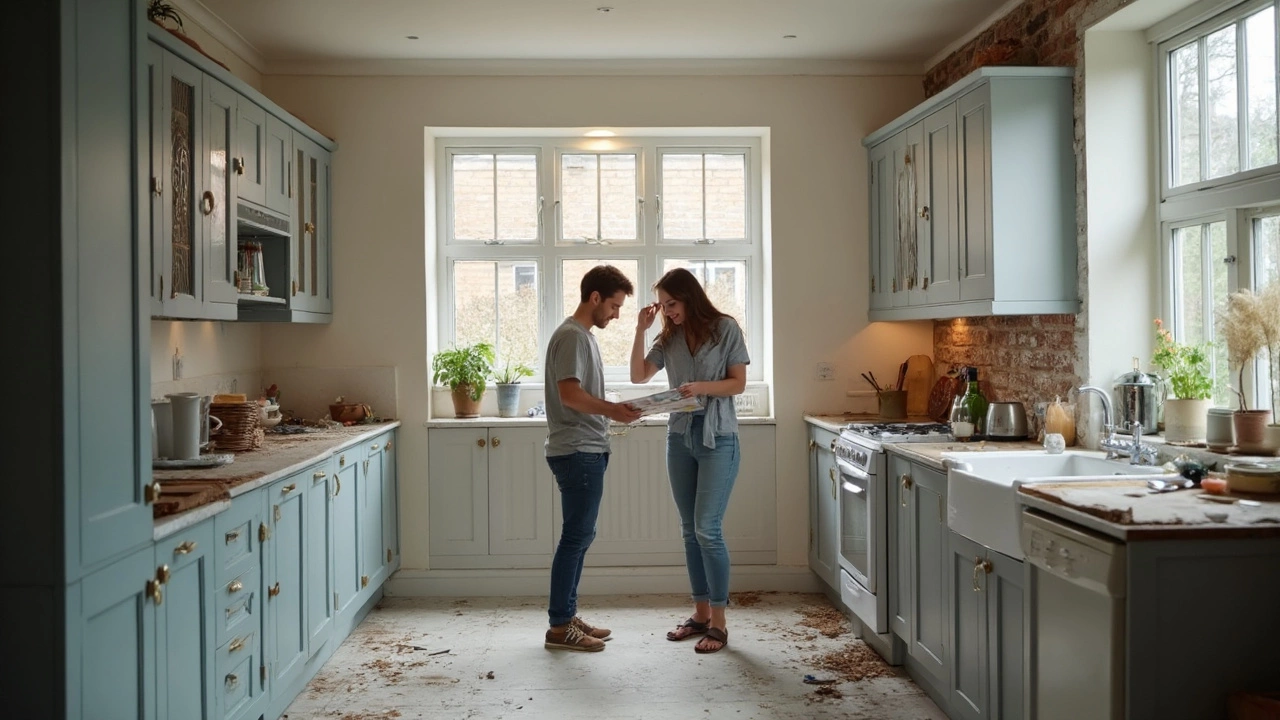No one really expects a kitchen remodel to be cheap, but that $30,000 number? It sits right in that spot where it sounds both doable and dangerous. Is it just enough for a glossy Instagram-worthy kitchen, or is that the number someone made up to lure you into a lowball quote? You’ll hear stories: a neighbor who went way over, a coworker who swears he did it for way less and got a chef’s paradise. But the truth hits differently when you’ve coughed up your own thirty grand and you’re staring at an empty room, down to the studs. Big question: what does $30k get you, really? How much can you stretch it, where does it vanish, and what can you pull off if you’re stubborn about making every penny count?
What Drives Kitchen Remodel Costs in 2025?
Pound for pound, kitchens still eat the biggest chunk of home improvement budgets — and the wild part is what costs the most is rarely what people expect. You might assume it’s the appliances or some swanky chef-grade cooktop, but honestly, labor soaks up the most cash. In the UK and the US right now, tradespeople like electricians, plasterers, and joiners know their worth, especially after a few tough years with supply chain shocks and inflation sticking around.
Materials come next on the list — with cabinets usually hogging the crown. Go for custom shaker cabinets and you’re already looking at £12,000-£15,000, and that’s before you even think about fitting them. Take the flat-pack or IKEA road, and you could shave thousands off, but it’s a different vibe. Worktops vary wildly in both looks and price: laminate is friendly to your wallet but stone, quartz, and concrete have shot up in price since the Covid days, with some slabs clocking in around £250 per linear metre. Oh, and tiles? Don’t let anyone tell you subway tiles are still cheap — the classics cost more than ever if you want a pristine finish.
Then, there’s all the little extras that add up — soft-close hinges, under-cabinet lighting, built-in recycling bins, or fancy taps. Even fitting a boiling water tap can set you back five hundred quid now. Want an island? A breakfast bar? That’s more cabinetry, more worktop, and usually a fresh chunk of change for rewiring. And, of course, expect surprises: old homes, like the ones you’ll find in Bristol with those lovely Victorian facades, hide cracked joists, leaky pipes, or dodgy electrics right where you want new units.
So, how does it shake out? A gut renovation, ripping everything out to the brick and starting fresh with appliances, custom storage, new wiring, plumbing, and flooring could blur past $30,000 (about £23-24k as of today) before you even notice. But a smart refresh — new fronts, paint, counters, a few brilliant upgrades — might clock in well below that. The wild swings in price are all about what you want, what you can do yourself, and how much you’re willing to compromise.

How to Make ,000 Do the Most in Your Kitchen Remodel
If $30,000 sounds like your whole budget, it’s time to hit pause and plan. Nothing burns through cash like hiring the cheapest builder without a plan or falling for every new gadget. So, how do you actually wring value from every pound or dollar?
First, make sure your goals don’t outstrip your account. Got your heart set on marble from Italy and a massive kitchen island? Maybe knock off one or the other, or swap for a clever dupe like high-end laminate that looks almost identical for a fraction of the price. List your kitchen must-haves, the sort of things you’ll use every day, right at the top. Sometimes, it’s better drawers and storage; for others, the dream might be a 90cm range cooker.
Break down the budget — not just for materials and labor, but for hidden costs. Demolition, plastering, plumbing, electrical updates, flooring, and waste removal each gnaw at the total. Use the 40/30/20/10 rule: 40% for cabinetry (it really is that much), 30% for labor, 20% for appliances and fixtures, and a 10% buffer for all the headaches you haven’t foreseen yet. If you can DIY any part, like demolition or painting, do it. A survey by Houzz in 2024 showed DIYers trimmed average remodel costs by about 15% — that’s nearly $4,500 on a $30k budget.
Here’s where shopping savvy becomes a superpower. Find ex-display cabinets from kitchen showrooms, or haul yourself to Facebook Marketplace where you’ll spot nearly-new Miele appliances or quartz worktops from over-ordered renovations. A Bristol couple I know scored £4,000 of kitchen units for less than £800 by being patient — but you need to be flexible with layout if you’re salvaging. Bulk-buying tiles or flooring also helps trim costs, and don’t forget to negotiate with tradespeople. Sometimes, paying cash (with a proper receipt) can help bring the labor cost down a touch, especially for smaller jobs.
One huge tip: spend on what you touch and see daily — worktops, tap, handles, lighting — and cut where you can on hidden elements. Kickboards don’t need to be solid wood. Insist on good soft-close hinges, but basic melamine carcasses can still do the job without anyone noticing. Avoid moving plumbing or electrical points if you don’t need to. Every time a sink or cooker shifts, so does your bill. Where possible, stick to your original kitchen layout and you’ll save thousands right out of the gate.
As for appliances, unless you’re running a restaurant from home, mid-tier brands deliver great reliability. Smart tech and Wi-Fi-enabled fridges sound awesome, but you might regret shelling out the extra grand when that cash could go on decent downlighters or splashbacks. And if your current cooker or dishwasher isn’t ancient, think about reusing them to save more budget for finishes.
The last bit? Watch the calendar. Builders are busiest in early spring and just before Christmas, so book during quieter months like school summer holidays or late autumn. You could score a better rate and their best-fit team. Essential advice for anyone: don’t pay more than a third upfront, keep your payment tied to project milestones, and always hold back the last bit until you’re completely happy.

What You Can Actually Get With ,000 — Real Scenarios
So, what does a $30,000 kitchen look like? Let’s sketch it out, from basic to top-of-the-line, so you can picture what fits.
If you’re after a simple but transformative update, this budget covers a lot. Think: fresh cabinet fronts (not full replacements), an upscale laminate or entry-level quartz worktop, new tile splashback, LED under-cabinet lighting, painting every wall, modern handles, a quality but not premium tap, and new flooring. That’s enough to drag a tired 1990s kitchen into the now — functional, bright, and (if you avoid wild brand names) unlikely to feel out of date in five years. You’ll find plenty of inspiration for this bracket on social media; look for Bristol-based renovation Instagrammers who’ve pulled it off, often in homes that started with a tiny galley layout.
For a mid-range project, $30k still helps a lot. You might splash out on solid wood doors or statement tiles, maybe one top-end appliance tossed in for fun, like a big fridge or a high-tech oven. Expect careful choices, though: there won’t be granite everywhere and you probably can’t change the kitchen footprint much. But you can get a feature island, a few clever pull-out pantry drawers, maybe even bifold doors onto a garden if you stay on budget with units and floors. It won't be magazine-level luxury, but it’ll impress friends, raise your property value a notch, and transform your space for real daily living.
Dreaming bigger? If your kitchen’s tiny — say, in a Victorian terrace or a city flat — you could go higher-end with posh tiles, all-new appliances, and custom cabinetry, but only if you do some work yourself, reuse some fixtures, or keep the footprint identical. If you hire a big brand with project management, expect upcharges for every tiny tweak and strict itemised bills. Some Bristol homeowners who went this route for a 12-square-metre kitchen found their budget ballooned by 20% before the splashback even went on.
- If you want a complete gut job with all new plumbing, electrics, bespoke cabinetry, and premium appliances, you’ll need more than $30k — closer to $45-60k in many UK cities as of June 2025.
- But if you’re sticking with most of your current layout, reusing some bits, and swapping finishes carefully, $30,000 gives you the power to do a lot. Just keep an eagle eye on those extras and work only with tradespeople who can show multiple local jobs, not just shiny photos online.
Here are a few smart moves that can help stretch your budget:
- Get three to five quotes from different builders, not just one, and actually check those references yourself.
- Visit showrooms but shop online for fixtures and appliances, especially clearance deals or returns.
- Ask your fitter for trade discounts on units or appliances; sometimes these knock 10-20% off retail.
- Invest in energy-efficient lighting and appliances to save on running costs later — it adds up faster than you think.
- Always keep that 10% emergency fund on hand. Something weird will go wrong, especially in older homes. It’s never fun to have to raid your holiday fund instead.
The bottom line? $30,000 is a solid budget for a kitchen remodel in 2025 — if you’re realistic about the scope and ruthlessly prioritise every choice. With smart planning, some muscle, and a little luck on hidden problems, you can come out with a kitchen you’ll love every day. But if you want to blow through walls, commission a local designer, and kit out with premium everything, you’ll need to be ready to flex upwards. That’s the remodel game: thrilling, frustrating, but if you play it right, absolutely worth it.





